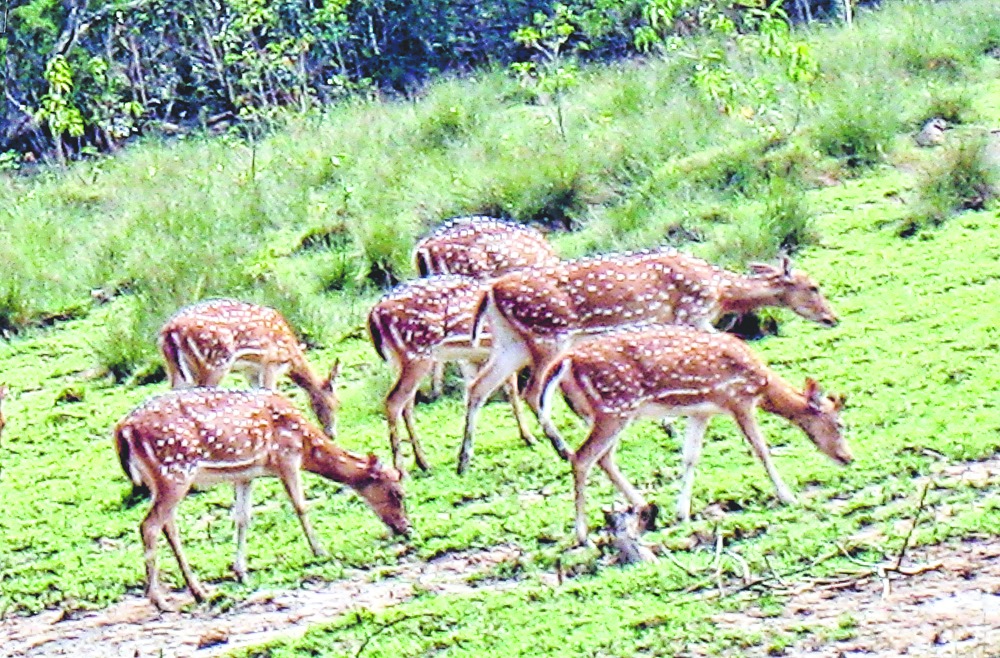
Kendrapara, Dec. 14: Bhitarkanika wildlife sanctuary has registered a 32 per cent increase in the population of mammals in the marshy wetland mangrove spots as compared to last year, said a recent survey.
As many as 5,119 spotted deer and wild boars were spotted at the national park, said the survey that was carried out in the forest and wetland areas of the park. These species frequently stray into the nearby human settlements on the close periphery of the park and vandalise crop and agricultural fields, triggering regular conflicts with the inhabitants.
Deer and boars apart, Bhitarkanika is home to nearly 1,200 species, including monkeys, hyenas, jackals and fishing cats, said the headcount report. Last year's census had found 4,740 mammals inside the national park. The figure has jumped to 6,253 this year.
This was the second such census programme undertaken in the national park. A survey of the animals was vital for the study of the growth pattern of the species living within the marshy wetlands and mangroves , said an official.
The objective of the ongoing census is to ascertain the exact population of these mammals. By all indications, their number is on a steady rise due to the conducive environment and availability of food reserve. The enumerators carried out the headcount on the basis of distinct footmarks of the deer, boar and hyenas.
While 3,125 spotted deer inhabit in Bhitarkanika, 1,394 wild boars call the forest their home.
The census break up of other mammals include 1,313 monkeys, 186 jackals, 19 common langur, 122 otters, four sambar deer, 11 jungle cats, 10 foxes, 11 mongooses, seven wolves, 28 fishing cats and 12 hyenas.
The population of monkeys, jackals and sambar has, however, dropped in comparison to last year's figures.
The number of animals is growing. Recurring man-animal conflicts following the animals' straying into human settlements are indicators of their growing numbers, said an official.
The animals' numbers are proportionate to their habitation corridors. Factors prompting the animals making their way to crop fields and orchards in village areas could also be analysed methodically on the census figures, said divisional forest officer, Rajnagar mangrove (wildlife) division, Bimal Prasanna Acharya.
The forest department also conducts the annual headcount of estuarine crocodiles, winter migrant avian species, monsoon migrant water birds as well as olive ridley turtles during their annual mass nesting at Gahirmatha beach. The Gahirmatha marine sanctuary also comes under the administrative jurisdiction of the national park.
Observers attribute a couple of factors to the rising number of animals. The rich and lush-green mangrove forest is an ideal habitat for hyenas, boars and deer. The lack of human interference is also beneficial.
Besides, there is imbalance in predator-prey base in Bhitarkanika. Unlike the Sundarbans, the Bhitarkanika mangroves are devoid of tigers. Only estuarine crocodiles prey upon these animals, Acharya said.










